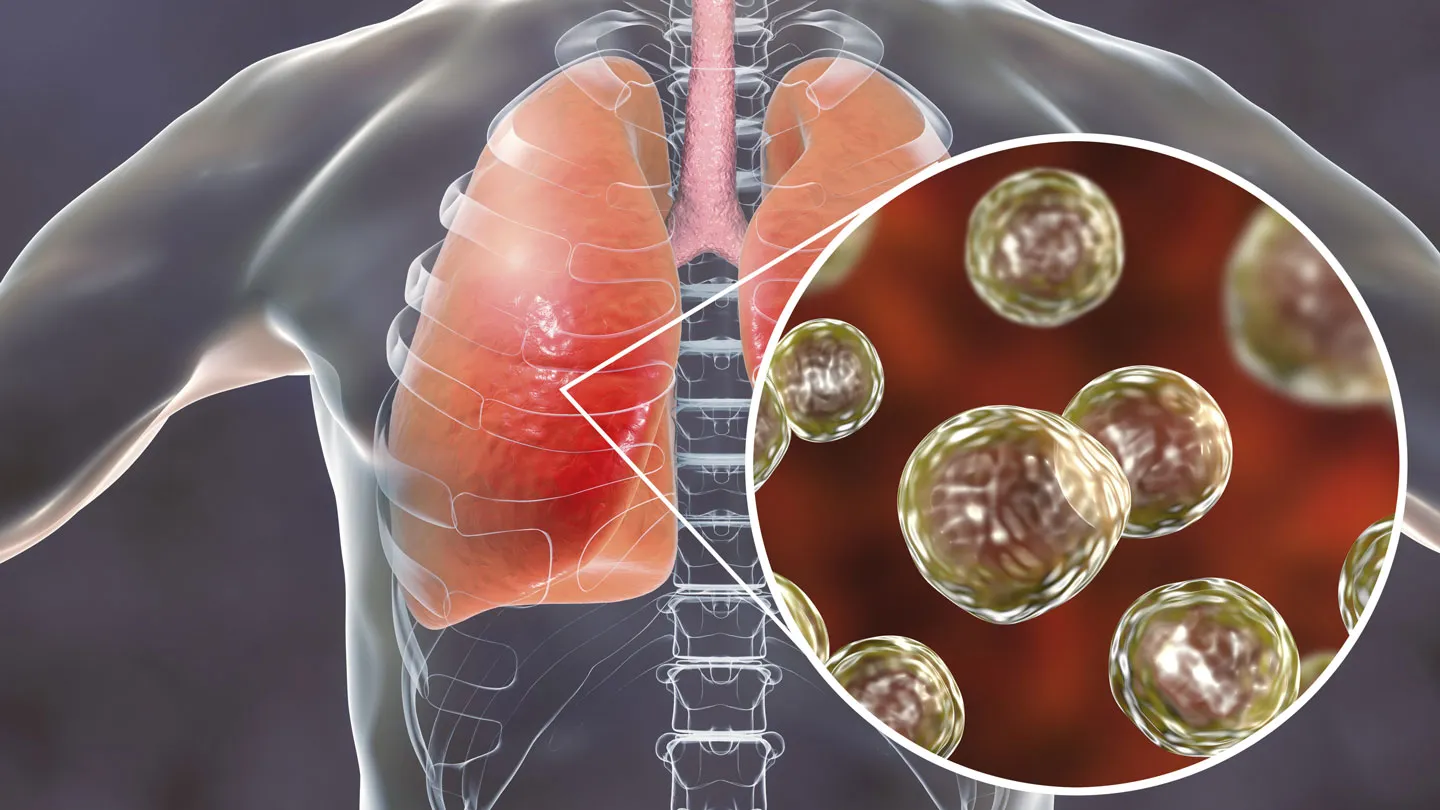
The earliest indications of a burgeoning respiratory infection are often incredibly subtle, frequently dismissed as mere fatigue or a temporary allergic reaction. The human body does not usually announce the arrival of a pathogen with an immediate, dramatic display; instead, the onset is a gradual, insidious process that can begin with nothing more than a faint scratchiness in the throat or an uncharacteristic weariness that settles in the afternoon. Recognizing these minimal initial shifts is the difference between managing a minor illness at home and facing a significantly protracted recovery, or even a more serious complication. A meticulous awareness of your baseline health is the primary tool for early detection, forcing you to look past the overt cough and fever to the less obvious changes in your physical state and daily functions.
The Onset is a Gradual, Insidious Process that Can Begin with Nothing More than a Faint Scratchiness in the Throat
Many respiratory illnesses, both upper and lower tract in nature, do not present with a high, spiking fever right away. Instead, a low-grade fever or an almost imperceptible sensation of being “too warm” might be the first clue. This mild elevation in body temperature, sometimes barely registering above the average normal range, is the immune system’s silent opening move against the invading virus or bacteria. Coupled with this, you might notice an unusual fatigue that feels fundamentally different from normal stress or lack of sleep. It’s a deep, bone-weary exhaustion that seems disproportionate to your recent activity level, making simple tasks feel overwhelmingly difficult. This profound tiredness can often precede the classic respiratory symptoms by as much as a day or two, making it a critical, though often overlooked, early warning signal.
A meticulous awareness of your baseline health is the primary tool for early detection
Beyond systemic changes, paying close attention to the nasal passages and throat is essential. That first hint of a sore throat, often described as a dryness or a tickle rather than a sharp pain, is frequently the earliest localized symptom, resulting from the pathogen’s initial colonization. This can be quickly followed by an uncharacteristic feeling of nasal congestion or a sudden, unexplained onset of clear, watery rhinorrhea. The early mucus is usually thin and transparent, contrasting sharply with the thick, discolored discharge that appears later in the infection’s course. Missing these initial mucosal cues means losing precious time to initiate supportive care that can mitigate symptom severity.
The Coexistence of Rhinorrhea and Cough is Highly Suggestive of a Common Cold Etiology
The cough itself, which is the hallmark of most respiratory infections, also has an evolution that can signal a developing illness. Early on, the cough may be dry and irritating, almost reflexive, rather than productive of sputum. It often starts as a persistent tickle in the back of the throat or the upper chest that simply won’t resolve. This type of cough, when it appears alongside a runny nose or nasal congestion, creates a classic symptomatic pairing. This coexistence of rhinorrhea and a dry cough is highly suggestive of an upper respiratory infection, such as the common cold, but it’s crucial to track its progression. A developing illness will see this cough change its character, becoming more frequent, more forceful, and eventually developing into one that brings up some form of mucus.
Early on, the cough may be dry and irritating, almost reflexive, rather than productive of sputum
In the earliest phase, you also need to monitor your other bodily responses. Subtle muscle aches and a generalized body discomfort that mimics a minor bout of flu can be present before any significant respiratory symptoms fully manifest. This myalgia is a direct result of the systemic inflammatory response, a sign that the immune cascade has been fully activated. Furthermore, a mild headache that seems resistant to the usual remedies might appear concurrently with the low-grade fever and body aches. These are all nonspecific indicators, yet when they cluster together, they paint a clearer picture of a systemic infectious process taking hold, differentiating it from simple allergies or environmental irritation.
The Best Way to Determine Whether an Illness is Viral or Bacterial is by Observing the Timeline
One of the most pressing questions in the early stages of a respiratory illness revolves around its underlying cause: is it viral or bacterial? The answer profoundly impacts the required treatment. The challenge is that both types of pathogens can cause strikingly similar symptoms, including fever, cough, and general inflammation. However, the best way to determine whether an illness is viral or bacterial is by observing the timeline of symptoms and their severity. Viral infections, like the common cold or influenza, tend to have a more gradual onset, worsening over a few days before generally beginning to improve within a week to ten days. Their fever is typically milder, often staying below 102∘F.
Viral infections, like the common cold or influenza, tend to have a more gradual onset
A bacterial infection, on the other hand, often presents in one of two ways: either with a sudden, severe onset—though this is less common in the earliest stages—or, more frequently, as a secondary infection that takes hold after a viral illness has already run its course. The key red flags for a bacterial element include symptoms that persist longer than the expected ten to fourteen days for a virus, or, more critically, a situation where the illness appears to be improving and then suddenly worsens dramatically, marked by a return of a high fever, often above 102∘F. This worsening fever and the development of thick, yellow, or green mucus are all strong signals that a bacterial complication, such as bacterial pneumonia or acute sinusitis, may have set in, demanding a different treatment approach than simple rest and hydration.
Difficulty Breathing or Shortness of Breath Represents a Significant Escalation
As the infection progresses from its earliest stages, a critical boundary is crossed when symptoms begin to affect the lower respiratory tract—the lungs and bronchi. This is where subtle signs transition into outright medical concerns. While a persistent cough is a warning sign, the true alarm should sound at any indication of difficulty breathing or shortness of breath. This represents a significant escalation, as it means the infection is interfering with the body’s primary function of gas exchange. Feeling like you cannot take a deep, satisfying breath, or noticing rapid, shallow breathing even at rest, is not something to dismiss. It is a sign of potential bronchitis, bronchiolitis, or pneumonia developing.
Difficulty breathing or shortness of breath represents a significant escalation
Another crucial sign is wheezing, a high-pitched whistling sound during exhalation. This noise is produced when the airways become narrowed or obstructed by inflammation, mucus, or muscle spasms. Wheezing is often a symptom of diseases like asthma or Chronic Obstructive Pulmonary Disease, but its new onset during a respiratory illness is a definite warning sign of lower airway involvement. Furthermore, pay attention to chest pain or tightness, especially pain that increases when you take a deep breath or cough. This discomfort can indicate inflammation of the pleural lining around the lungs, a serious development that demands professional medical evaluation to rule out severe conditions.
A Persistent Cough that Lingers Beyond the Usual Duration May Signify a Respiratory Infection
It is essential to understand that there is no universal “finish line” for every respiratory ailment, but the duration of symptoms is an important diagnostic metric. A persistent cough that lingers beyond the usual duration—generally considered to be about three weeks for an adult—may signify a deeper underlying issue that is not resolving naturally. This is the point where a primary care assessment becomes non-negotiable, even if the fever and initial body aches have long since disappeared. An enduring cough can indicate that the airways are still inflamed, that a post-infectious sensitivity remains, or that there is an entirely different, perhaps non-infectious, cause that was masked by the initial illness.
A persistent cough that lingers beyond the usual duration may signify a respiratory infection
In conjunction with a persistent cough, the appearance of blood or bloodstained mucus when you cough is an urgent sign that requires immediate medical attention. While it can sometimes be a minor issue—a small vessel rupture from forceful coughing—it is also a symptom associated with more serious conditions in the lower respiratory tract, and therefore cannot be ignored or self-diagnosed. Similarly, any coughing that makes it hard to speak or breathe, or that leads to fainting, signals a compromised airway and should be considered an emergency. These are the explicit physical boundaries that delineate an infection moving from a manageable nuisance to a serious medical event.
Seeking Professional Advice for a Cough that Does Not Go Away After a Few Weeks Is Prudent
Knowing when to transition from supportive home care to seeking professional medical advice is perhaps the most critical component of early infection management. For most people, seeking professional advice for a cough that does not go away after a few weeks is prudent. This timeframe serves as a practical marker that suggests the body’s typical immune response has failed to clear the pathogen or that an underlying secondary issue needs addressing. Furthermore, you should not wait for three weeks if you experience a high or persistent fever that does not respond to over-the-counter medication, or if you note signs of systemic distress such as persistent dizziness, confusion, or inability to urinate, which signals potential dehydration and severe illness.
Seeking professional advice for a cough that does not go away after a few weeks is prudent
Moreover, individuals who are already considered high-risk, such as those over 65, pregnant, or living with chronic heart or lung conditions, or those with compromised immune systems due to conditions like diabetes or chemotherapy, must adopt a much lower threshold for seeking care. For these populations, what presents as a mild infection in a healthy adult can rapidly progress to a life-threatening situation. The initial mild symptoms should be reported to a healthcare provider far sooner than the average person would, ensuring timely intervention that can preempt a serious complication.
